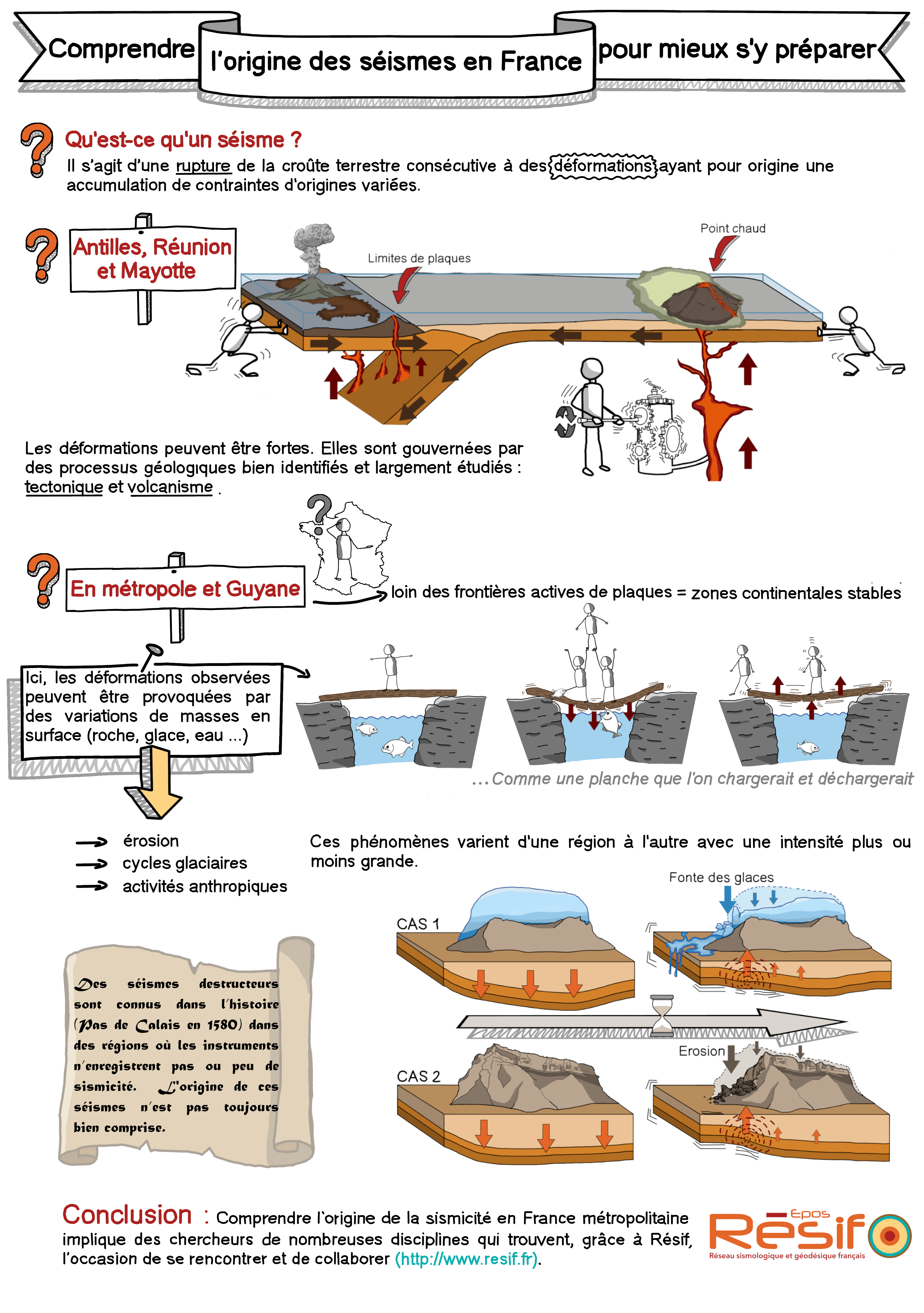On the occasion of the International Day for Disaster Risk Reduction, Résif has produced a computer graphics for all audiences. This computer graphics is accompanied by a short article that explains in a little more detail the problem of seismicity in metropolitan France and overseas.
What is an earthquake?
It is a rupture of the rocks of the Earth’s crust, resulting from an accumulation of stresses over time. During this rupture, the accumulated energy is suddenly released and disperses in all directions of space in the form of waves. The passage of these waves at the surface is felt as vibrations of the ground: this is the earthquake. To understand why an earthquake occurs in a given place, we must understand how and why energy accumulates at that place, in other words, what are the deformation processes at work. This is the subject of research by many scientific teams, including those of the Résif Research Infrastructure.
Why are there earthquakes in France?
To answer this question, it is necessary to distinguish the origin of the different types of earthquakes that take place in all French territories, both ultramarine and metropolitan.
Overseas, particularly in the Lesser Antilles, Mayotte and Reunion Island, the deformation of the Earth’s crust, and thus the seismicity, are governed by well-identified and widely studied geological processes, such as plate tectonics or volcanism. The deformations can be strong and, as a consequence, the seismicity important, because these areas are close to tectonic plate boundaries or hot spots (1).
In contrast, metropolitan France and French Guiana are stable continental zones, i.e. located far from active plate boundaries. The deformation of the Earth’s crust is very low. It is therefore necessary to search for additional origins of recorded seismicity.
Often associated with earthquakes, the tectonic history of the French mountain ranges does not explain, in itself, all the movements and deformations observed by geophysical measurements. Other processes are considered that contribute to generate seismicity as it is recorded today and as it is known in history: environmental processes such as erosion, climatic processes such as the consequences of glacial cycles, or anthropic processes. In these three cases, it is the addition or removal of mass (rock, ice, water) that leads to the deformation of the Earth’s crust and sometimes to the generation of earthquakes. These phenomena vary from one region to another, with small or large consequences, in terms of seismicity, depending on their magnitude and rates.
Recurrent and occasionally destructive earthquakes have been observed over the centuries. The occurrence of such events, sometimes in areas where current seismic activity is very low (as in 1580 in the Pas de Calais) still raises questions today.
Understanding the origin of seismicity in France thus remains a scientific challenge calling on a very broad disciplinary field. The Transversal Seismicity Action of Résif aims at bringing together the different scientific communities involved in Earth sciences, with the ultimate goal of improving seismic hazard models applied to all types of structures (including sensitive structures such as bridges or nuclear power plants).
(1) A hot spot is an area of the Earth’s mantle where a plume of magma forms, rises and pierces the crust, giving rise to volcanic activity.
See also
The CNRS-INSU has relayed this computer graphics on its Tweeter feed.
Télécharger
Illustration and text in pdf format (French)
Contact
- Scientific contacts : Hervé Jomard (IRSN) et Stéphane Mazzoti (Géosciences Montpellier)
- Illustration : Aurore Delahayes (CNRS-INSU)

